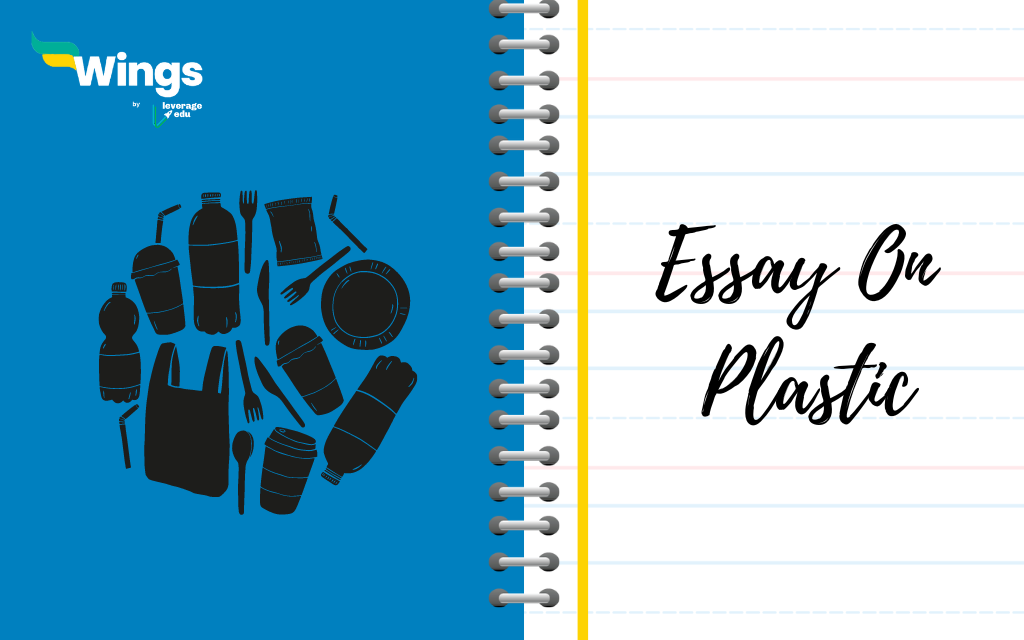Essay on Plastic: Plastic is synthetic or semi-synthetic in which polymers are the main material. In India, around 3.4 million tonnes of plastic waste is generated, out of which only 30 per cent is recycled. Plastic has become an integral part of our lives, our packed food, electronics items, homes, cars, and even ships and planes contain plastic materials. Plastic has surrounded all spheres of our lives.
Check the Latest Updates on All Board Exams 2024
‘However, plastic is more harmful than its uses. The most popular plastic is polyethene, the plastic bags we use to carry food. We rely on plastic bags and other materials because they are cheaper, versatile, moisture-resistant, lightweight and readily available. Also, its transparency, allows us to see-through products, like poly bags, containers and optical devices. But did you know how much harmful plastic is? The decomposition of plastic can take somewhere between 20 to 500 years, and even then, it never fully decomposes.
Also Read: Types of Waste Management Disposal Methods in India
How Does Plastic Harm the Environment?
The government of India has banned single-use plastic, which is meant for one-time use only and then thrown away. In the last 70 years, more than 8 billion metric tons of plastic waste has been produced by humans. This plastic waste is dumped in oceans, lakes rivers, and on land. Plastic is not only harmful to both humans and the environment.
- Plastic thrown in oceans and rivers damages aquatic life. Animals get stuck in plastic nets or bottles, choking them to death.
- Plastic kills terrestrial wildlife, as animals try to eat food wrapped in plastic bags thrown on land.
- In time, plastic items break down into smaller particles known as microplastics, less than 5 millimetres.
- Some plastics contain additives and chemicals harmful to the environment and human health.
- The production and incineration of plastics contribute to greenhouse gases, such as carbon dioxide and methane, into the atmosphere.
Also Read: Water Pollution Definition, Causes, Effects and Prevention
What are the Alternatives to Plastic?
Now the big question is: what can replace plastic? What can be a cheaper and safer alternative? Experts believe that instead of trying to pursue a more modern approach, we need to look back in time when plastic was not in existence. Some alternatives to plastic can be:
- Pottery and ceramics
- Natural fibre cloth
- Platinum silicon
- Stainless steel
- Paper and Jute bags
- Glass
- Bamboo and wood
Also Read: Essay on Environmental Pollution
Conclusion
How often do you carry a plastic bag while buying groceries? Where will that plastic end? Can you use something else instead of plastic? Try to ask these questions yourself when you use plastic bags next time. Government and private authorities are shifting towards a greener approach, replacing plastic bags with alternate options like paper and jute bags.
However, adopting sustainable alternatives to plastic will depend on factors like cost, availability, functionality, and the specific requirements of the product or application. The environmental impact of plastic use, especially single-use plastics, has become a significant concern. Plastic pollution, long degradation times, and the presence of microplastics in ecosystems are some of the environmental issues associated with plastic.
Also Read: Essay on Water Pollution
Also Read: National Pollution Control Day 2023
FAQs
Ans: Plastic is a synthetic or semi-synthetic material where polymers are the main material. Plastics are categorized into two categories: Thermoplastics, which can be moulded and Thermosetting Plastics, which undergo irreversible chemical changes. The most popular plastic is polyethene, the plastic bags we use to carry food. We rely on plastic bags and other materials because they are cheaper, versatile, moisture-resistant, lightweight and readily available. Also, its transparency, allows us to see-through products, like poly bags, containers and optical devices.
Ans: There are different plastic waste management practices, but the best one is to reduce its use. Avoid using single-use plastic items like polyethene and straws. Try to buy food wholesale instead of small packaged food. Replace plastic Tupperware with steel or glass containers.
Ans: The 3 harmful effects of plastics are: Produce chemicals like carbon dioxide and methane, kill aquatic and terrestrial ecosystems, and degrade soil quality.
Related Articles
| Essay on Science | Essay on Diwali in English |
| Essay on Azadi Ka Amrit Mahaotsav | Essay on Communication |
| Essay on Nature | Essay on Dussehra |
| Essay on My Favourite Book | Essay on Football |
For more information on such interesting topics, visit our essay writing page and follow Leverage Edu.
 One app for all your study abroad needs
One app for all your study abroad needs














